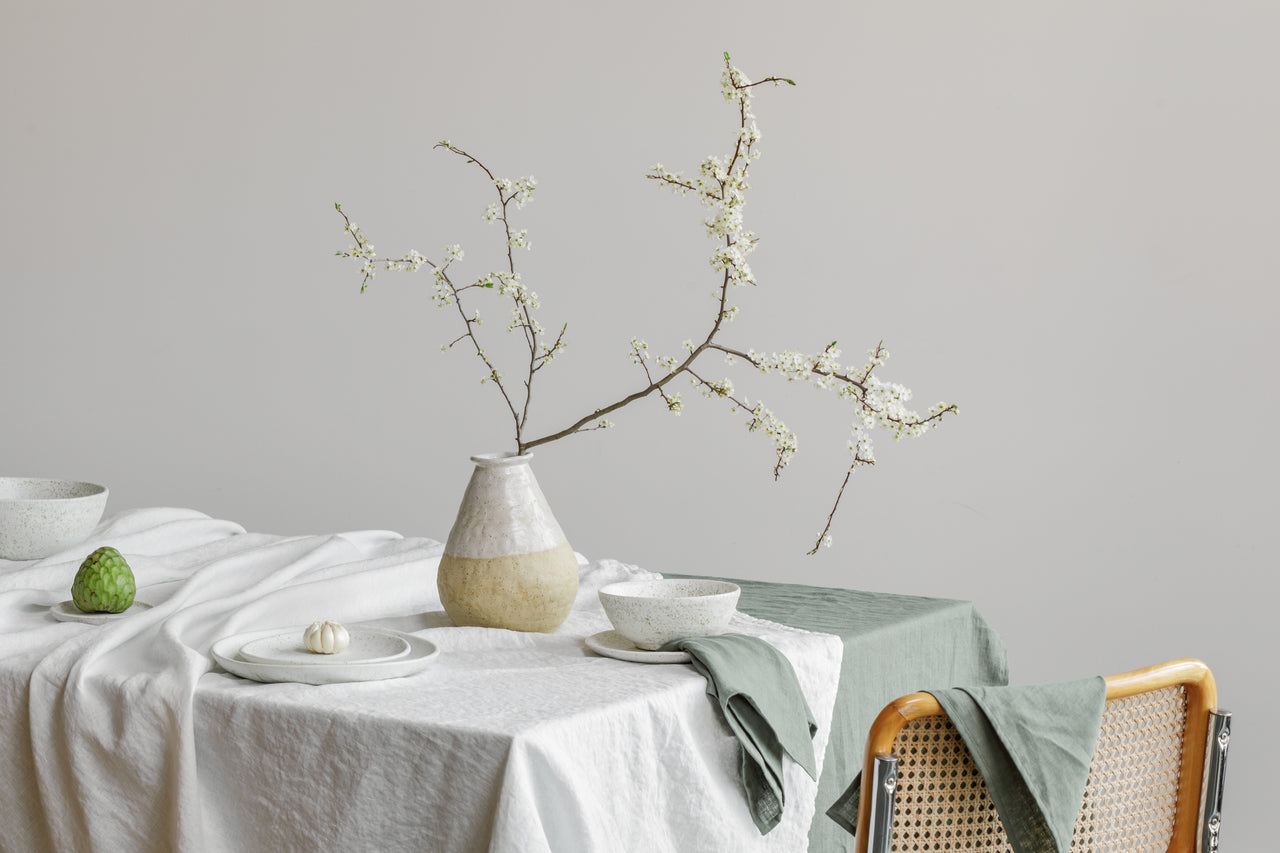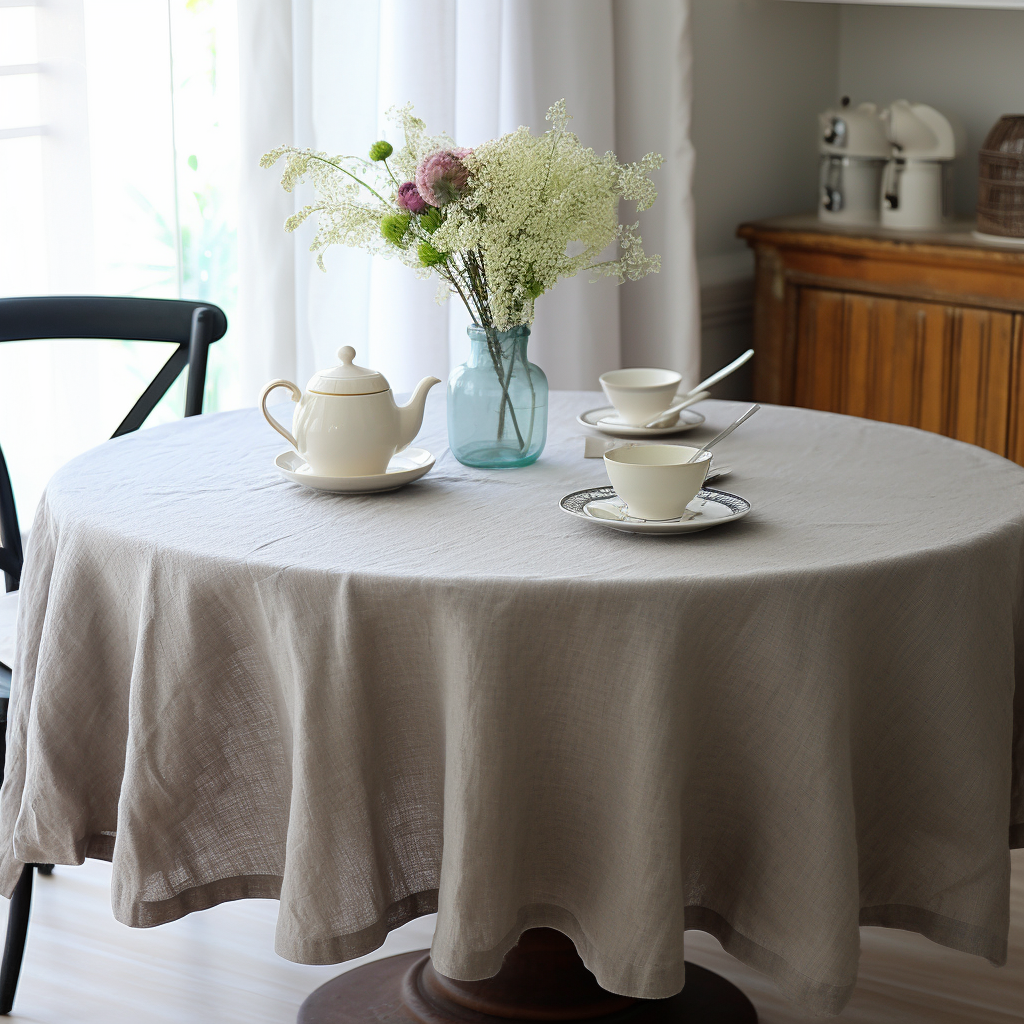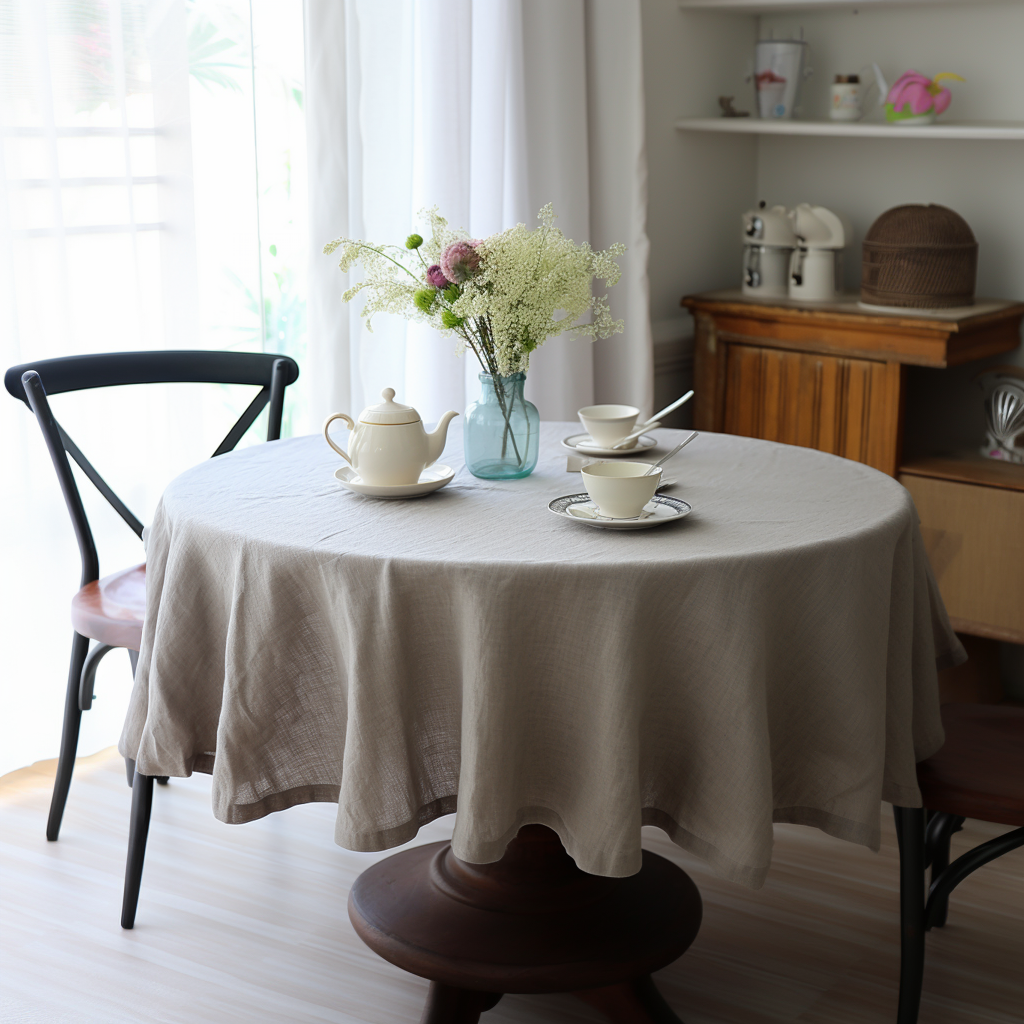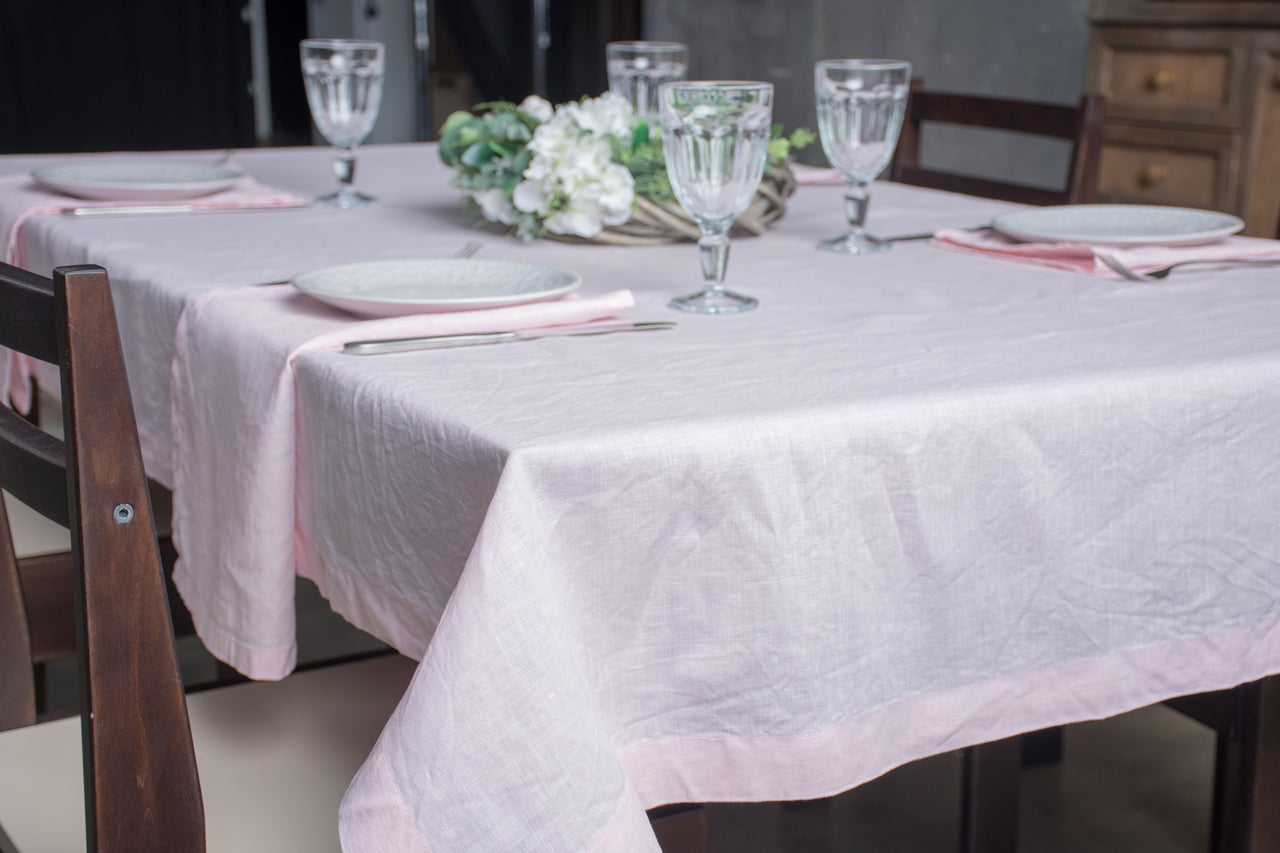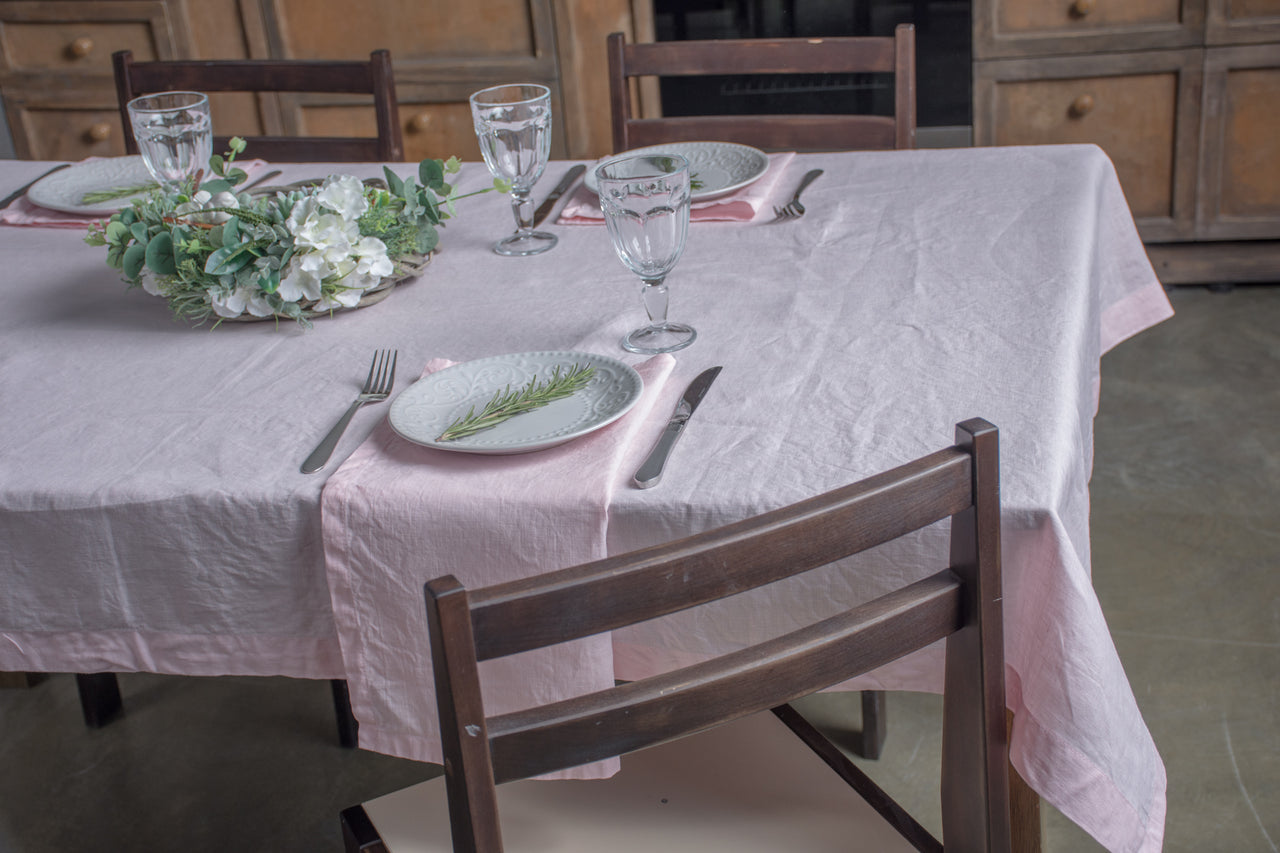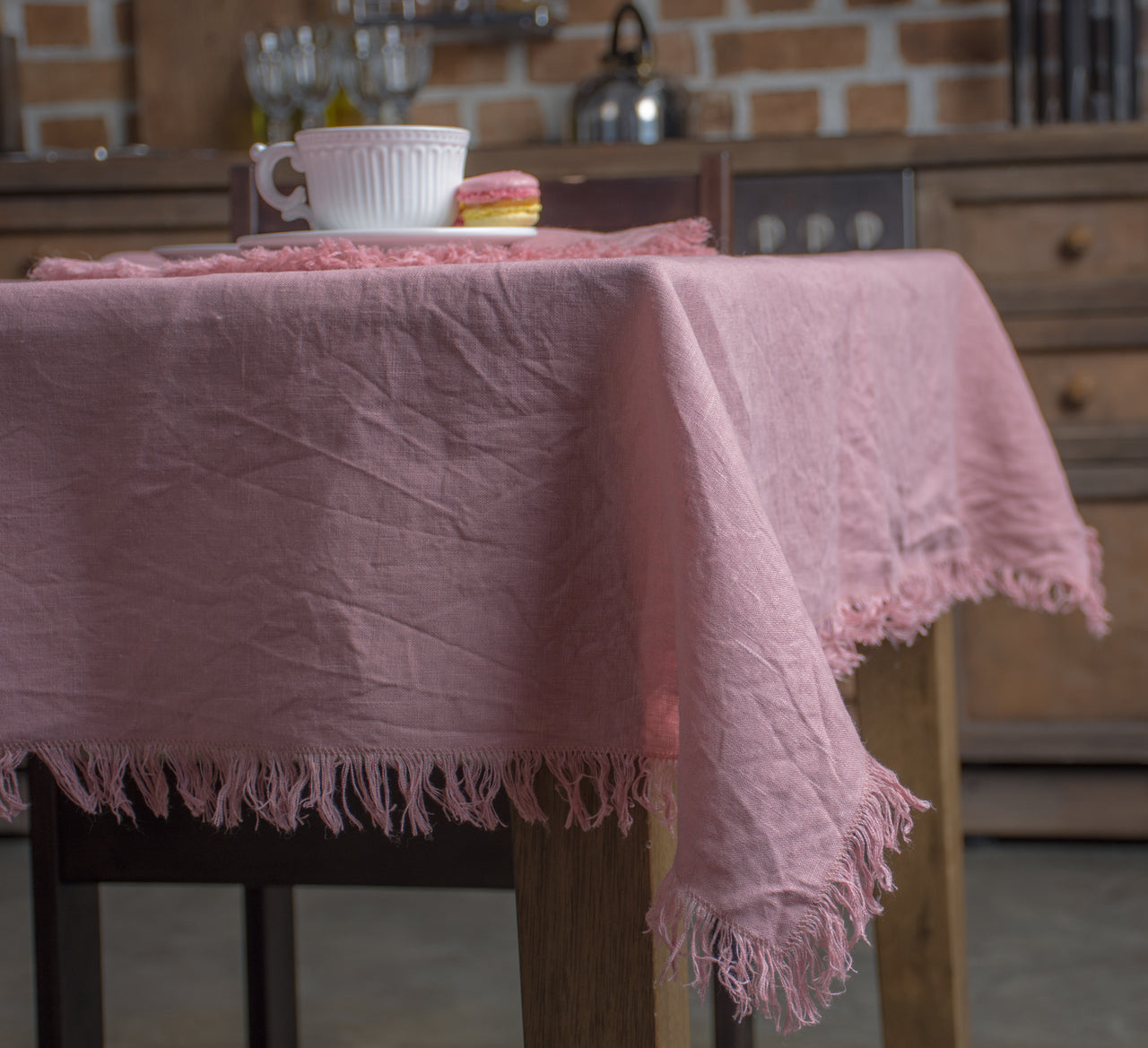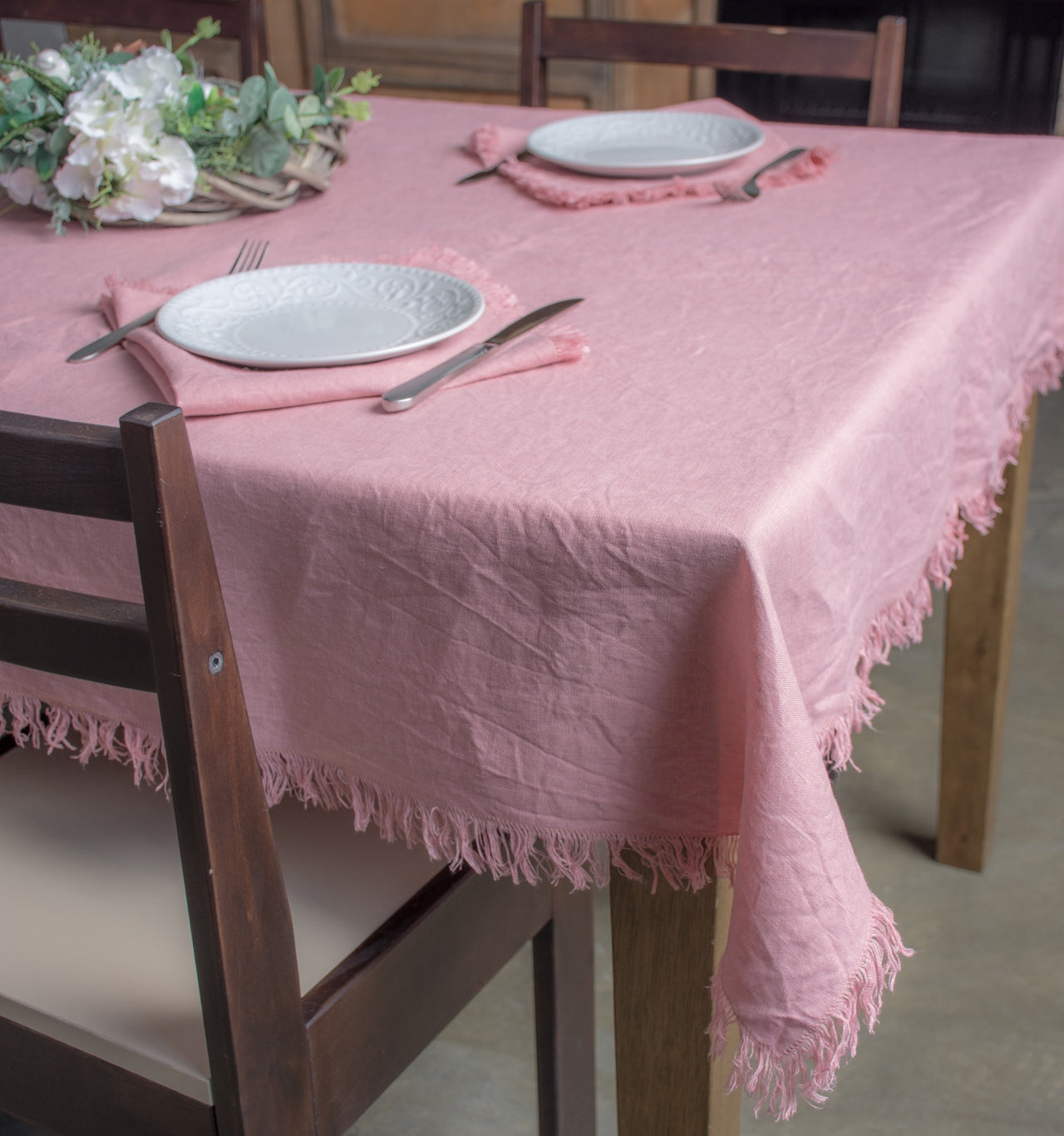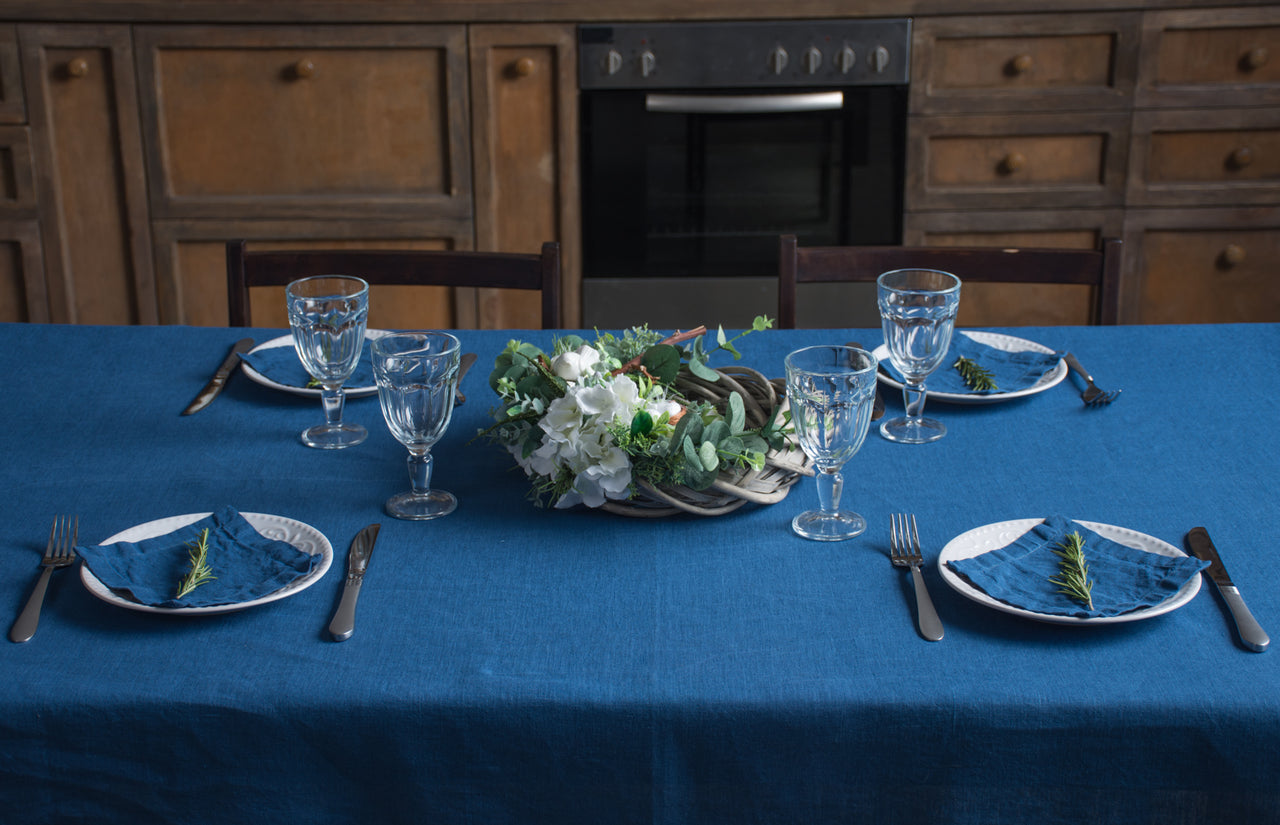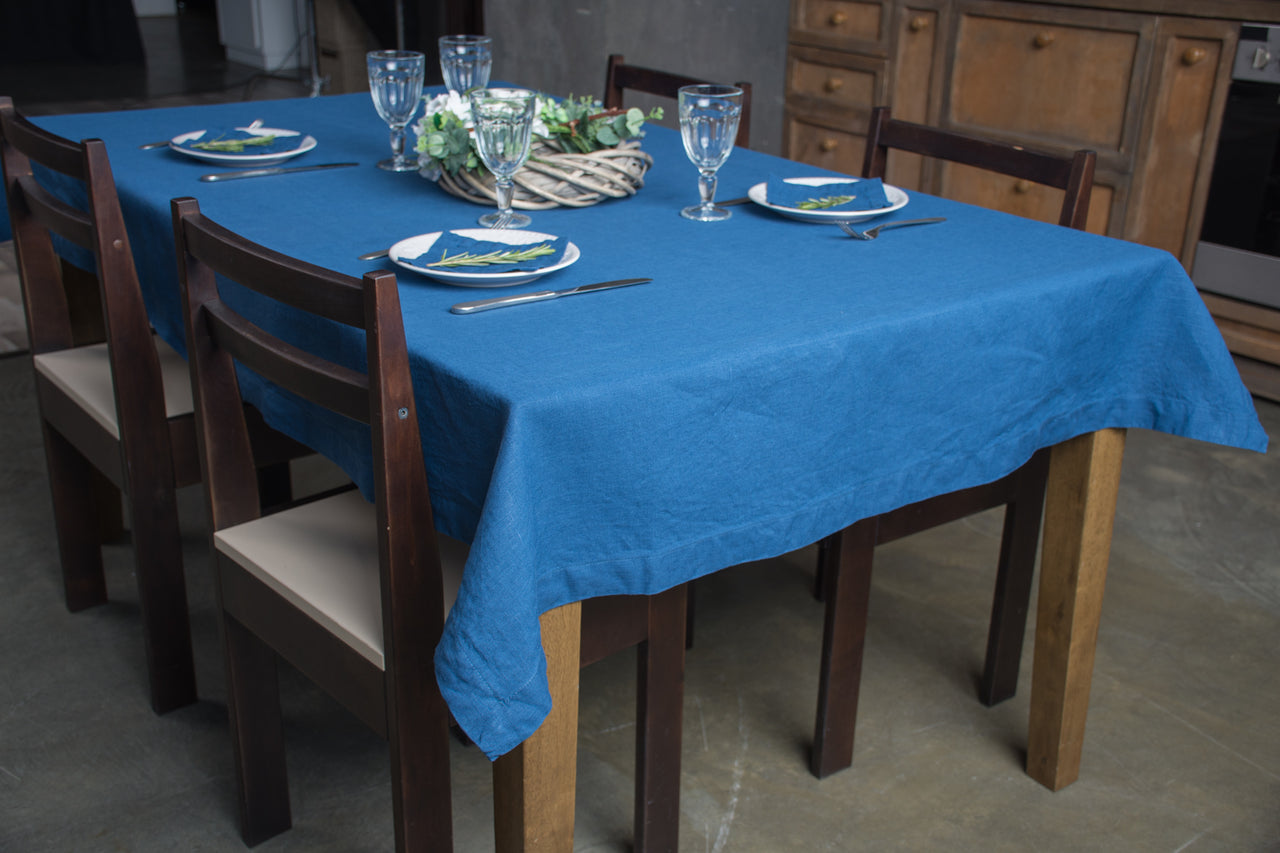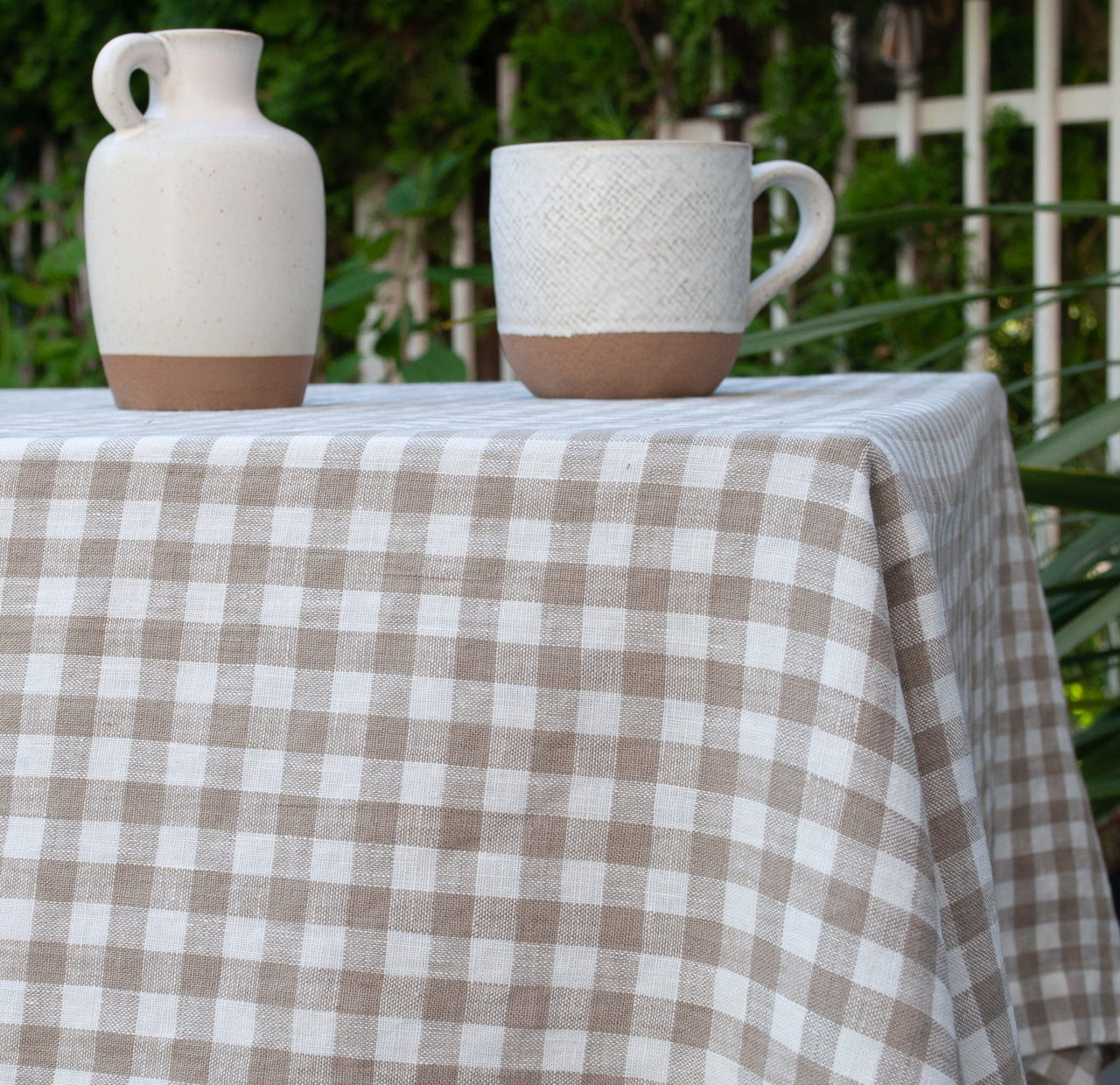Is Linen a Good Fabric for a Tablecloth?
Yes, linen is generally considered a good fabric for a tablecloth. It is a natural fiber made from the flax plant and possesses several qualities, including colors and designs, making it a popular choice for tablecloths:
- Durability
- Absorbency
- Breathability
- Elegant Appearance
- Environmentally Friendly
However, it's important to note that linen tablecloths do have some characteristics that may be considered drawbacks by some people. Linen tablecloths tend to wrinkle easily, so if you prefer a perfectly smooth look, you may need to embrace the natural texture of linen or iron your tablecloths regularly. When ordering, consider different colors and price points according to your needs. Additionally, linen tablecloths offer more cost-effectiveness compared to some synthetic alternatives, but many people find the investment worthwhile due to linen's quality and aesthetic appeal. Shop for it without hesitation.
Should I Iron Linen Tablecloths?
The decision to iron a linen tablecloth, with colors and design, depends on your personal preference and the desired look for your table setting. Here are some considerations to help you decide while buying tablecloths:
- Natural Texture: Linen tablecloths offer a natural, slightly textured appearance with different colors, and many people appreciate the casual and relaxed look it provides, wrinkles and all. If you like this natural aesthetic, you may choose to embrace the wrinkles and forgo ironing. Filter details before making a purchase and check the collection online. If buying for the kitchen, ensure compatibility, with deep tablecloths being preferable to white ones. Sort the products and check for new collections while making a purchase.
- Smooth Look: If you prefer a more formal and polished appearance for your tablecloth, you may need to take proper care. Ironing your tablecloth creates a smooth look, especially for deep colors, which may not require frequent ironing. Ironing helps smooth out wrinkles, creating a neater, crisper look with different designs and colors. White tablecloths offer a smoother look than deep ones, and prices may vary accordingly.
Ultimately, whether or not to iron your tablecloth is a personal choice, and both options can result in a beautiful table setting, ensuring you get the best value for your money.
Occasion
Consider the occasion for which you're using the tablecloth. For casual or everyday use, you might not be concerned about wrinkles in the tablecloths (regarding colors). However, for more formal events or special occasions, you might want to present a more polished tablecloth setting and opt to iron the linen. When choosing for an occasion, explore a new collection and look for a reasonable price.
Personal Style
Your personal style and the overall style of your home can influence your decision. Some people prefer the laid-back, slightly rumpled look of linen, while others prefer a more structured and pristine appearance.
If you decide to iron your linen tablecloth, here are some tips:
- Use a Medium Heat Setting: Set your iron to a medium heat to avoid damaging the fibers of the linen tablecloth.
- Iron Table Linens on the Reverse Side: If possible, iron the tablecloth on the reverse side to prevent direct contact between the iron and the fabric. This method yields great results.
- Use a Damp Cloth: Place a damp cloth or press cloth between the iron and the linen tablecloth. They provide a bit of moisture, making it easier to remove wrinkles. For damp cloths, you can choose from a variety of options.
- Iron in Sections of the Tablecloths: Work in small sections of the tablecloth, and don't be overly concerned about achieving a completely wrinkle-free surface. Some wrinkles are natural and contribute to a good look. Additionally, they can add charm to the colors.
Ultimately, whether or not to iron your tablecloth is a personal choice, and both options can result in a beautiful table setting. It will help you get the best value for your money.
Are Linen Tablecloths Easy to Clean?
Linen tablecloths offer ease of cleaning, but there are some considerations to keep in mind to maintain their quality and longevity. Here are some tips for cleaning tablecloths.
Machine Washing
A variety of tablecloths are available to enhance your space's beauty. Most linen tablecloths offer machine washable compatibility (regarding colors). Use a gentle cycle with a mild detergent to avoid damaging the fibers. Washing it in cold water is usually recommended to prevent shrinkage. Colors are crucial for tablecloths as they significantly contribute to the ambiance and overall aesthetic of a dining space. The choice of colors can evoke specific moods and set the tone for different occasions. So, consider the colors before washing. Check the instructions before you shop and understand what the product can offer you.
Avoid Bleach
When we talk about a "stain" on a linen tablecloth, we are referring to an unwanted mark or discoloration that has affected the fabric of the tablecloth. While buying from an online shop, sort the products and choose from different options (colors and characteristics). Linen is a natural fabric that offers breathable qualities. While linen is a durable material with various colors, it is not immune to staining. Common stains on linen tablecloths can include those from food, beverages, oils, and other substances that may come into contact with the fabric during meals or events. Avoid using bleach or harsh chemicals, as they can weaken the fibers and affect the natural color of the linen. Instead, opt for a mild detergent.
Pre-Treat Stain
If you encounter a stain, it's a good idea to pre-treat it before washing. You can use a gentle stain remover or spot-treat stains with a mixture of water and a mild detergent because they offer better results and help you get the best price for your money.
Dry Naturally
These types of tablecloths are best air-dried or line-dried. While some linen items can be tumble-dried on low heat, excessive heat can cause shrinkage. If you choose to tumble dry, remove the linen while it's still slightly damp to minimize wrinkles.
Ironing
As we mentioned, linen tends to wrinkle, and if you prefer a smooth look, you may need to iron your tablecloth. Iron the linen while it is still slightly damp for easier wrinkle removal.
Store Carefully
When not in use, store your linen tablecloth in a cool, dry place. It will offer the best results. Avoid storing it in plastic, as linen benefits from good air circulation. If you fold it, consider placing acid-free tissue paper between folds to minimize creases.
Check Care Instructions
Always check the care instructions provided by the manufacturer. Some linen blends or special finishes may have specific care requirements. Check the rights properly and sort the products before selecting.
While these tablecloths are generally easy to clean, it's important to note that they do require some care regarding colors. Following these guidelines can help you keep your linen tablecloth in good condition and maintain its quality over time.
Is Linen Better Than Cotton for Tablecloths?
Choosing between linen and cotton for a tablecloth hinges on personal preferences and specific needs. As we mentioned before, linen tablecloths offer a natural, textured elegance, ideal for formal settings. Its durability stands out, growing softer with each wash while maintaining strength. However, linen is prone to wrinkles, which some find charming and others a drawback. Its absorbency and quick drying make it suitable for occasions where spills are likely.
On the other hand, cotton tablecloths provide a softer, more casual appearance than linen tablecloths. While these tablecloths may not match linen in durability, cotton still holds up well under regular use. Cotton's tablecloths have a smoother texture and wrinkle less, offering a neater look to your table. It is a more forgiving option in terms of maintenance, requiring less ironing than linen tablecloths. Besides, the price can vary. Additionally, cotton's breathability makes it suitable for various seasons. You can use the cloth year-round on your table. Though these tablecloths may not match linen's cooling properties in hot weather. Ultimately, the decision rests on factors like formality, comfort, ease of maintenance, and the specific ambiance you want for your dining experience. You need to choose the one that comes at the best price and quality.
What Are the Different Types of Linen?
Linen, a natural fiber derived from the flax plant, comes in various types based on the processing and weaving methods. The three main types of linen are:
- Plain: Also known as plain-weave linen, this type is characterized by a simple over-and-under pattern. It is lightweight, breathable, and often used for casual clothing, kitchen towels, and basic household linens. It comes in different colors but isn't great for tablecloths.
- Damask: Damask linen is woven in a way that creates a pattern with a subtle sheen. This type is often used for tablecloths, napkins, and formal dining linens due to its elegant appearance. So you should order damask tablecloths. Make sure to look for colors while shopping. Pick the one that suits your needs.
- Loosely Woven: This type of linen has a more open weave, creating a textured and somewhat rustic appearance. It is often used for items like summer clothing, curtains, or lightweight throws. These types of tablecloths are rare and don't offer different colors.
How to Choose Linen Tablecloths?
Selecting the best linen tablecloth involves considering factors such as material quality, weave, size, and maintenance. Here are some recommendations while buying tablecloths:
Material Quality Of the table linens:
Look for pure linen or a high linen content in the tablecloths (e.g., 100% linen or linen blends). High-quality linen tablecloths are durable, breathable, and become softer over time. The quality also varies with different colors. Pick the best one and experience the true benefits.
Weave
While choosing, opt for a medium to heavyweight linen for a luxurious feel and better durability. Don't focus solely on colors and designs. Damask or jacquard weaves can add an extra touch of elegance with intricate patterns.
Size
Select a size for the tablecloths that suits your space. Aim for a drop of 6-10 inches on each side for a classic look. Consider the shape of your table (round, square, rectangular) when choosing the appropriate dimensions.
Color and Design:
Choose colors and designs for the tablecloths that complement your overall decor and the occasion. Neutral tones are versatile, while subtle patterns or embroidered details can enhance visual appeal. Selecting the ideal colors for tablecloths involves thoughtful consideration of the overall aesthetic you wish to achieve. Begin by exploring a diverse palette to find shades that resonate with your personal style and the ambiance of your space. Colors play a pivotal role in setting the tone for your dining experience. Vibrant colors, like radiant reds or deep blues, inject a lively energy into the room. Softer hues such as pastel pinks or serene greens evoke a more tranquil atmosphere. Earthy tones, like warm browns or rustic greens, can infuse a sense of coziness. Neutrals such as classic white tablecloth or versatile grays provide an elegant backdrop for any occasion.
Consider the existing colors in your dining area and opt for tablecloths that either harmonize or create a striking contrast. Patterns can also introduce an element of visual interest, blending various colors seamlessly. Whether you prefer monochromatic simplicity or a bold, eclectic mix, let your chosen colors reflect your personality and enhance the overall ambiance of your dining space. Remember, the right colors not only adorn your table but also contribute to the overall aesthetic harmony, making every meal a delightful and visually pleasing experience.
Maintenance:
Check the care instructions and colors of the tablecloths. While linen tablecloths may require more ironing than other fabrics, its natural wrinkles can also add character depending on the colors. If low maintenance is a priority, look for linen-cotton blends that may be more forgiving. Besides, deep colors are easy to maintain. If you buy colors like white, you may need to maintain it more carefully.
Brand Reputation:
Consider reputable brands known for producing high-quality linens before buying tablecloths. They offer different colors and designs. Reviews and recommendations can provide insights into the performance and longevity of a particular brand's products (regarding colors). Investing in tablecloths from reputable brands may save you money in the long term. Discover unique colors and designs from different brands.
Price
Determine your budget and explore price options within the budget range while buying tablecloths with different colors. Keep in mind that investing in a higher-quality tablecloth (with exclusive colors and design) may result in a longer lifespan and a more luxurious feel. Check the offers of different online shops. Select from different options (fabrics) and a variety collection.


